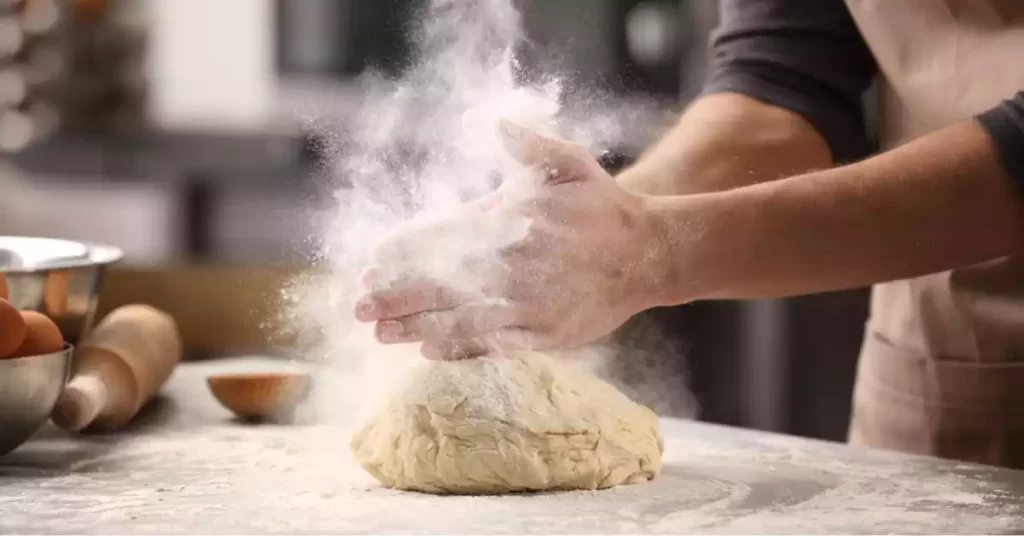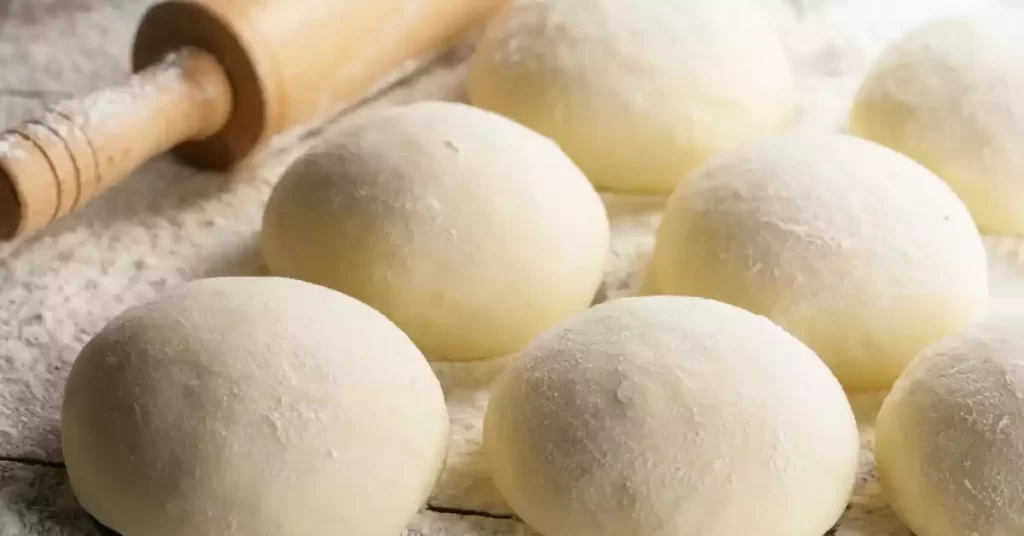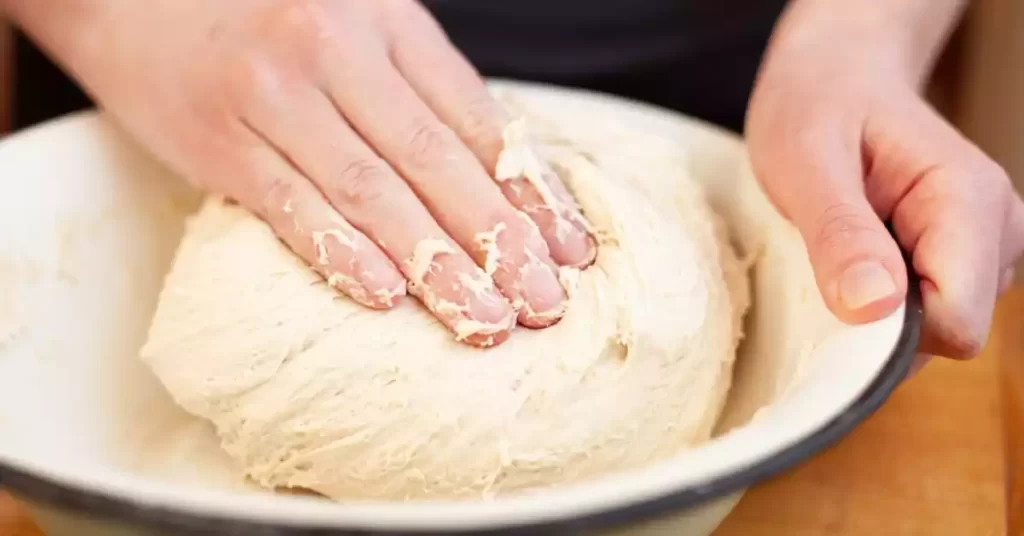The smell of freshly baked bread wafting through a bakery has a charm of its own. But, when you visit the supermarket, you are more likely to find pre-packaged, mass-produced loaves lining the shelves. This is commercial bread, a staple of many households around the globe.
Commercial bread refers to the mass-produced bread we find in supermarkets. It’s a product of a large-scale industrial process that uses machines for mixing, kneading, proving, and baking. Through this process, large quantities of bread are made quickly and efficiently to meet consumer demand.
For centuries, bread has played an integral role in our diet. From a simple mixture of flour and water in ancient times, it has evolved into a complex product that now comes in various types, shapes, and flavors, thanks to the advent of commercial bread production.
History of Commercial Bread
The Beginning of Mass Bread Production
The concept of commercial bread isn’t new; it dates back to the time of the Industrial Revolution. During this era, there was a massive shift from home-baked or locally produced bread to large-scale commercial production.
Evolution of Commercial Bread
As technology advanced, so did the methods of bread production. The advent of automation brought about machines capable of kneading dough, reducing manual labor and enhancing efficiency. From ingredients to processes, the evolution of commercial bread has been a journey of innovation and change.
Key Ingredients in Commercial Bread
Role of Flour in Commercial Bread
Flour is the backbone of bread, providing the basic structure. In commercial bread, the most commonly used flour is wheat due to its high gluten content, which gives the bread its elasticity and chewiness.
Importance of Yeast and Its Varieties
Yeast plays a critical role in bread making. It ferments the sugars in the dough, producing carbon dioxide, which causes the bread to rise. Commercial bread often uses faster-acting yeasts to speed up production.
Use of Water
Water isn’t just a medium for mixing other ingredients; it also activates yeast and helps in gluten formation. It contributes to the texture and crust of the bread.
Other Ingredients and Their Roles
Commercial bread may include other ingredients like salt, sugar, fats, and preservatives. These not only enhance flavor but also increase shelf life.

The Bread Making Process in Industries
Commercial bread production is a fascinating mix of art and science, requiring precision and consistency at every step. It’s an intricate process that involves several steps, each vital to the final product’s quality and taste.
Bread Production: Step by Step
The first stage in commercial bread production is mixing the ingredients. This involves combining flour, water, yeast, salt, sugar, fats, and sometimes preservatives in large industrial mixers. The goal here is to form a homogenous dough and start the process of gluten development.
Next comes the fermentation or proofing stage. The dough is left to rest, allowing the yeast to ferment the sugars in the dough, producing carbon dioxide. This causes the dough to rise and gives the bread its characteristic light and airy texture.
After proofing, the dough is divided and shaped into individual loaves. These loaves then go through a second proofing process to further develop the flavor and texture.
Then, it’s time for baking. Commercial bakeries often use large tunnel or deck ovens for this stage. Precise control of temperature and baking time is crucial here to ensure a good rise and the right color and crust.
Finally, after baking, the loaves are left to cool before they are sliced and packaged. The cooling step is important as it allows the bread to firm up and makes slicing easier.
Commercial Baking Methods Explained
There are various baking methods employed in commercial bread production. For example, many large-scale bakeries use tunnel ovens, which allow for continuous baking and hence, efficient production. These ovens have a conveyor belt system that transports the loaves through a heated tunnel, ensuring consistent baking conditions.
Some bakeries may use deck ovens, where the loaves are baked on a heated surface, similar to traditional stone ovens. This method can offer more control over the baking process and is often used for artisan breads.
Quality Control in Bread Production
Quality control in commercial bread production involves several stages. Firstly, raw ingredients are checked for quality and consistency. The dough is also tested during mixing and proofing to ensure it has developed the right texture and elasticity.
During baking, temperature and time are closely monitored. Any variation can affect the bread’s rise and color. After baking, the loaves are inspected for shape, size, color, and crust quality.
Further, microbiological tests are conducted to ensure the bread is safe to eat. And, to ensure freshness, the bread’s shelf life is closely monitored.

Different Types of Commercial Bread
Bread comes in a remarkable variety, each with its unique characteristics. Here’s a look at some common types of commercial bread.
Understanding White Bread
White bread is perhaps the most common type of commercial bread. Made from refined wheat flour, it has a light color and soft texture. The refining process strips the wheat grain of its bran and germ, leaving only the endosperm. This results in a flour that’s lighter in color and has a milder flavor.
While white bread is often criticized for its lower nutritional content compared to whole grain bread, it remains popular for its soft texture and versatility.
Whole Grain Bread and Its Benefits
Whole grain bread is made from flour that includes all three parts of the wheat grain: the bran, germ, and endosperm. This means it retains all the fiber, vitamins, and minerals that are lost during the refining process used to make white flour.
Whole grain bread has a denser texture and a slightly nutty flavor compared to white bread. Its higher fiber content makes it a healthier choice, as dietary fiber is known to aid digestion and may help regulate blood sugar levels.
Unraveling the Mystery of Multigrain Bread
As the name suggests, multigrain bread is made from more than one type of grain. These can include wheat, barley, oats, millet, flax, and more. Each grain brings its unique flavor and nutritional benefits to the bread.
However, it’s important to note that multigrain doesn’t necessarily mean whole grain. Unless the label specifically says “whole grains,” the grains used may still be refined.
Rye, Pumpernickel, and Other Varieties
There are many other types of commercial bread out there. Rye bread, for instance, is made from rye flour and has a hearty flavor and dense texture. Pumpernickel, a type of German bread, is made from coarsely ground rye and has a dark color and distinctive sour flavor.
Sourdough bread is another interesting variety. It’s made using a naturally fermented dough starter, giving it a characteristic tangy flavor. The fermentation process also makes it easier to digest for some people.
These are just a few examples of the many types of bread available commercially. Each one has its unique characteristics, and exploring these can be a delightful journey for the palate.

How to Choose Quality Commercial Bread
With so many options available, choosing a loaf of bread at the supermarket can be a daunting task. Here are some tips to help you select quality commercial bread.
Reading and Understanding Bread Labels
Bread labels can provide a wealth of information about the product, from the ingredients used to the nutritional content. When reading bread labels, look for bread made from whole grains for the maximum nutritional benefit.
Considerations for Nutritional Content
Bread can be a good source of carbohydrates, the body’s main source of energy. However, not all bread is created equal in terms of nutritional content. Whole grain and multigrain breads typically have more fiber and nutrients compared to white bread.
Selecting Bread for Dietary Restrictions
For those with dietary restrictions or allergies, it’s important to check the ingredient list carefully. Some bread may contain allergens like nuts, dairy, or soy. There are also gluten-free bread options available for those with celiac disease or non-celiac gluten sensitivity.
Pros and Cons of Commercial Bread
Commercial bread has its benefits and drawbacks, and understanding these can help you make informed choices about your diet.
Benefits of Commercial Bread
Commercial bread is readily available and comes in a variety of types to suit different tastes. It’s also often fortified with vitamins and minerals, making it a good source of certain nutrients. Plus, its long shelf life makes it a convenient choice for many households.
Drawbacks You Should Know About
On the downside, some commercial bread may contain additives and preservatives to extend its shelf life. Some also have high levels of sugar and sodium. And, while white bread is popular, it lacks the fiber and nutrients found in whole grain bread.
The Impact of Commercial Bread on Health
Bread is a staple food in many diets, but its impact on health can depend on the type of bread and how much you eat.
The Role of Commercial Bread in Our Diet
Bread provides carbohydrates, which are the body’s main source of energy. It can also provide important nutrients, especially if made from whole grains. However, it’s still important to eat bread as part of a balanced diet that includes a variety of foods.
The Connection Between Bread and Chronic Diseases
Some studies have linked a high intake of refined grains, such as those found in white bread, with an increased risk of chronic diseases like heart disease and type 2 diabetes. However, more research is needed in this area, and the overall quality of your diet and lifestyle play significant roles in health.
The Future of Commercial Bread
The commercial bread industry is constantly evolving, driven by consumer trends and technological advancements.
Innovations in Commercial Bread Making
The commercial bread industry is not immune to innovation. Bakeries and manufacturers are continually exploring new methods and technologies to improve the quality, flavor, and nutritional value of their bread products.
One area of innovation is the use of ancient grains and alternative flours. These include spelt, quinoa, amaranth, and teff, which offer unique flavors and nutritional profiles. By incorporating these grains into commercial bread production, bakers can cater to the growing demand for diverse and healthier options.
Moreover, there is a rising interest in natural and organic bread. Consumers are increasingly conscious of the ingredients used in their food and are seeking bread made with minimal additives and preservatives. As a result, commercial bakeries are developing cleaner and more natural bread recipes to meet this demand.
Additionally, technology plays a crucial role in the future of commercial bread making. Automated systems and robotics streamline the production process, leading to increased efficiency and consistency. These advancements not only reduce costs but also allow bakeries to meet the ever-growing demand for bread products.

Trends and Predictions for the Industry
Looking ahead, several trends and predictions shape the future of the commercial bread industry.
One prominent trend is the focus on sustainable and eco-friendly practices. Consumers are increasingly concerned about the environmental impact of food production. As a response, bakeries are adopting sustainable sourcing practices, reducing waste, and exploring eco-friendly packaging options.
Another emerging trend is the incorporation of functional ingredients in bread. These are ingredients that offer health benefits beyond basic nutrition. Examples include adding seeds for their omega-3 fatty acids or fortifying bread with vitamins and minerals. Functional bread aims to provide consumers with a convenient way to improve their well-being through their daily bread consumption.
Furthermore, customization and personalization are gaining traction in the commercial bread market. Bakeries are offering options for consumers to customize their bread by selecting specific ingredients, flavors, or textures. This trend caters to individual preferences and dietary needs, ensuring that consumers can find the perfect loaf for their unique tastes.
Lastly, the growing popularity of online shopping and direct-to-consumer models has impacted the bread industry. Many bakeries now offer online ordering and delivery services, providing convenience to consumers who prefer to have fresh bread delivered to their doorstep.
Frequently Asked Questions
What is the shelf life of commercial bread?
Commercial bread typically has a shelf life of several days to a week, depending on the preservatives used and storage conditions. It’s best to check the packaging for the specific shelf life information.
Is commercial bread bad for you?
The nutritional quality of commercial bread can vary depending on the type and brand. Some commercial bread, especially white bread, may have lower nutritional value compared to whole grain bread. It’s important to read labels and choose bread made from whole grains and without excessive additives or preservatives.
Can I freeze commercial bread?
Yes, commercial bread can be frozen to extend its shelf life. Ensure it is properly wrapped or stored in an airtight container to prevent freezer burn. Thaw frozen bread at room temperature or in the refrigerator before consuming.
Conclusion
Commercial bread has transformed the way we consume this timeless staple. From the industrialization of production to the wide variety of options available, commercial bread has become an integral part of our diets.
Understanding the bread-making process, the different types available, and how to choose quality bread is essential for making informed decisions about what we consume. While commercial bread offers convenience and accessibility, it’s important to prioritize nutritional value and consider individual dietary needs.
